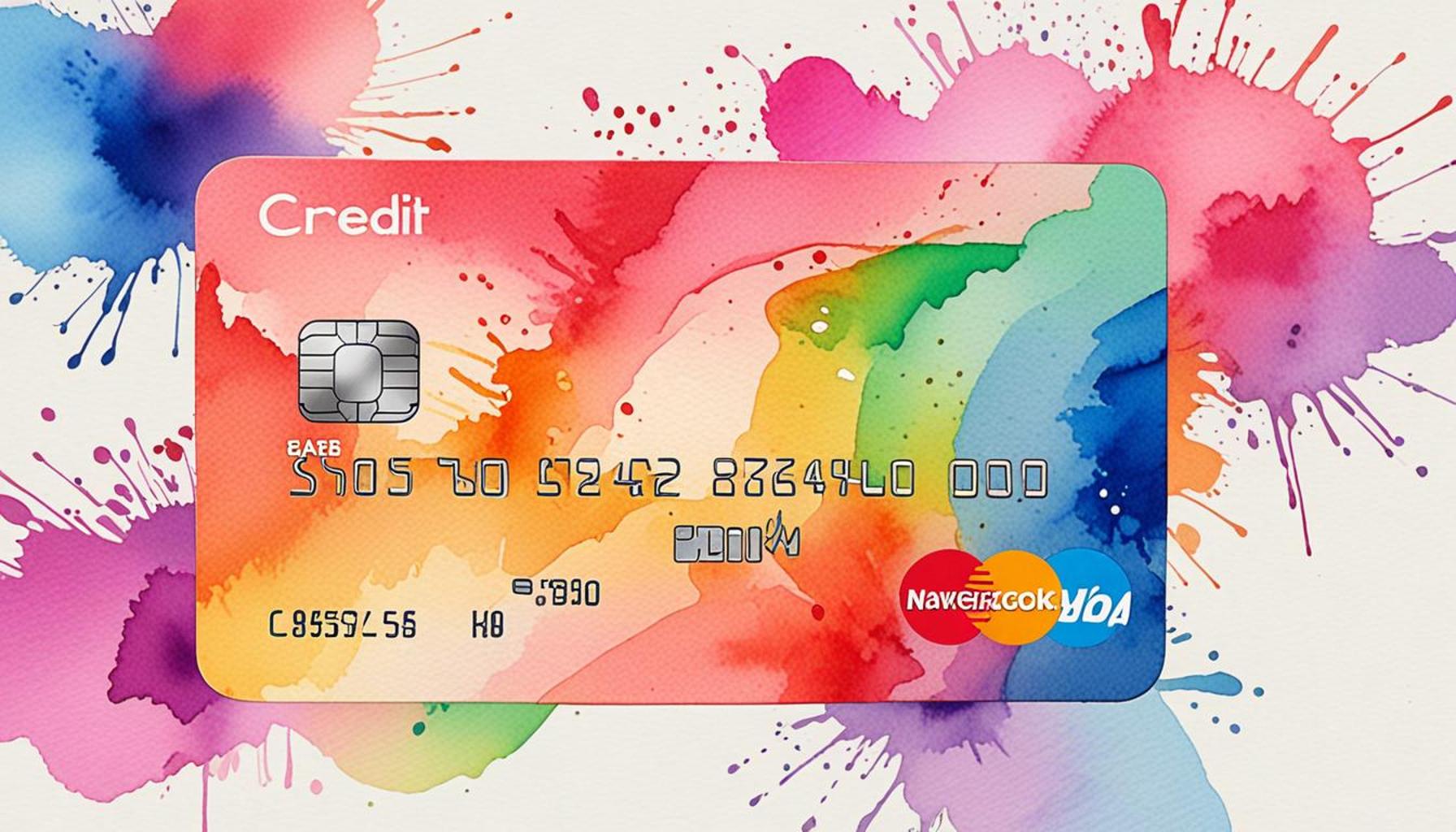Types of Credit Cards: Which is Best for Your Profile?

Understanding Credit Cards
Credit cards can be a handy tool for managing expenses and achieving financial goals. However, with so many types available, it’s essential to know which one aligns best with your spending habits and financial situation. Selecting a credit card that fits your lifestyle can not only ease financial management but also provide rewarding benefits.
Key Types of Credit Cards
Let’s explore some common types of credit cards:
- Rewards Credit Cards: These cards offer points or cashback on purchases, making them ideal for those who frequently spend in specific categories. For example, if you often dine out, a rewards card that provides extra points for restaurant purchases could save you money over time. As an Australian, you might find that cards offering Qantas or Velocity frequent flyer points can be particularly rewarding if you travel often.
- Low-Interest Credit Cards: Perfect for consumers who may carry a balance, these cards feature lower interest rates to help manage debt. For instance, if you occasionally find yourself unable to pay off your full balance monthly, a card with a lower interest rate can help minimize the amount you pay in interest charges, allowing you to reduce your overall debt more quickly.
- Balance Transfer Cards: These credit cards provide a promotional period with no interest on transferred balances, making it easier to pay off existing debt. If you have high-interest debt from another card, transferring that balance to a card with a 0% introductory rate can be a smart strategy. This allows you to focus on paying down the principal without accumulating additional interest, effectively helping you regain control over your finances.
- Student Credit Cards: Designed for students, these cards often have lower credit limits, helping young consumers start building credit responsibly. A student credit card can offer a great way to develop good credit habits, provided it is used wisely—like making timely payments and keeping spending under control.
- Secured Credit Cards: Backed by a cash deposit, secured cards are a great option for individuals looking to rebuild or establish credit. For example, if you’ve had past issues with credit, making a deposit to secure a card can help you prove your responsible use of credit over time as you work towards a better credit score.
Each type of credit card serves different needs, so understanding these options is crucial. By identifying your spending habits and financial objectives, you can select a credit card that not only fits your lifestyle but also maximizes your benefits. Remember, the right card for someone else may not be the right card for you. So take the time to explore these options and choose wisely.
Overall, responsible credit card use has the potential to enhance your financial portfolio, but it must be approached with awareness and discipline to truly yield the benefits.
Choosing the Right Credit Card for Your Needs
When it comes to navigating the vast world of credit cards, understanding the differences between various types is crucial in making an informed decision. Each type of credit card comes with its own set of features and potential benefits, making them suitable for different financial profiles and spending habits. Identifying your needs will help you align with the credit card that best suits your lifestyle.
Assess Your Spending Habits
Before selecting a credit card, take some time to assess your spending habits. Ask yourself the following questions:
- What do I spend the most on? Knowing whether you spend more on groceries, travel, or entertainment will guide you towards a rewards card that maximizes your benefits in those areas.
- Do I usually pay off my balance each month? If you consistently pay off your balance, you might be able to take advantage of rewards or cashback cards. However, if you struggle to pay your full balance, a low-interest card will likely serve you better.
- Am I looking to consolidate debt? If you’re considering transferring high-interest debt, seeking a balance transfer card with a promotional interest-free period should be your top priority.
- Am I new to credit or rebuilding my credit score? If you fall into this category, secured credit cards or student credit cards can provide valuable opportunities to build your credit history responsibly.
These questions will help you identify which type of credit card aligns with your financial behaviour and goals. Each individual is unique, and no single credit card will suit everyone’s needs. Awareness of your personal financial situation is essential and will empower you to make an informed decision.
The Importance of Fees and Rewards
In addition to understanding your spending habits, it’s essential to take into account the fees associated with different credit cards. Some cards come with annual fees, while others may not. For instance, premium rewards cards usually carry a higher annual fee but often provide additional perks, such as travel insurance or concierge services. In contrast, no-annual-fee cards may have fewer benefits but can still be a reliable option for day-to-day spending.
Moreover, while rewards may sound enticing, make sure to analyse whether your spending patterns actually match the rewards program. For example, if you earn 2% cashback on dining but rarely eat out, you might be better served by a card offering higher rewards in categories you frequently spend on, such as groceries or fuel.
Understanding both fees and rewards will help you gain a clearer perspective on the overall cost-effectiveness of a credit card. This diligence can ultimately prevent you from falling into debt traps and enable you to reap the advantages of enjoying credit responsibly. Thus, taking into consideration your financial habits, preferences, and specific needs is vital when choosing the right type of credit card for your profile.
Understanding Different Types of Credit Cards
Now that you have assessed your spending habits and considered fees and rewards, it is essential to familiarize yourself with the various types of credit cards available. Each type is designed to cater to specific needs, so knowing the distinctions can greatly assist you in making the right choice.
Rewards Credit Cards
Rewards credit cards are tailored for those who wish to earn points, miles, or cashback on their everyday purchases. These cards usually offer rewards based on your spending categories—such as grocery shopping, travel, or dining out. For example, a common structure is earning 1 point for every dollar spent, with bonus points in certain categories. If you frequently travel, a rewards card that provides points for airline bookings and hotel stays can enhance your travel experiences.
However, it’s crucial to read the terms and conditions carefully. Some cards, for instance, may require you to spend a minimum amount to unlock higher reward rates, while others may have caps on how many points you can earn in a particular category. Moreover, consider whether you would rather accumulate points for travel or prefer straightforward cashback, which can be easier to redeem.
Cashback Credit Cards
If simplicity and straightforward rewards appeal to you, cashback credit cards might be your best option. These cards offer a percentage of your spending back as cashback, which can be applied as a statement credit or direct deposit into your bank account. For example, a card might offer 1.5% cashback on all purchases or higher percentages for specific categories.
This type of credit card can be particularly attractive for everyday spenders who may not want to keep track of points. However, just like with rewards cards, it’s important to assess the terms, including any caps on cashback, and whether there are any fees associated with the card.
Low-Interest Credit Cards
If you find yourself carrying a balance from month to month, a low-interest credit card may be the best option for your profile. These cards typically offer a lower annual percentage rate (APR) compared to standard cards, which can significantly reduce the interest you pay on carried balances. Many low-interest cards also provide an introductory period with a 0% APR, allowing you to pay down debt without incurring interest during that period.
For instance, if you have a balance of AUD 1,000 on a standard card with an APR of 20%, you could end up paying a significant amount in interest. Switching to a low-interest card could save you money in the long run. However, it’s vital to ensure that the card doesn’t have high fees or hidden costs that could offset the benefits.
Balance Transfer Credit Cards
Another option for managing debt is a balance transfer credit card. These cards enable you to transfer balances from high-interest credit cards and benefit from promotional low or 0% interest rates for an introductory period. This feature can provide immediate relief, allowing you to focus on paying down the principal rather than accruing interest.
Before opting for a balance transfer card, make sure to read the fine print. Transfer fees may apply, and the promotional rate will only last a limited time. After that period, the interest rate may revert to a higher standard rate, so it’s crucial to plan your repayments accordingly.
Secured Credit Cards
Secured credit cards are ideal for individuals looking to build or rebuild credit. They require a cash deposit as collateral, which serves as your credit limit. Although these cards may not offer rewards, they can be a valuable financial tool to establish responsible payment behavior. Regularly paying your balance on time can positively impact your credit score, making it easier to qualify for unsecured credit cards in the future.
In Australia, secured cards may appeal to students or those with low or damaged credit histories. Be sure to check the terms associated with these cards, including annual fees and the process for releasing your security deposit when you improve your credit rating.
Ultimately, understanding the different types of credit cards available and how each aligns with your financial habits allows you to make well-informed decisions that will lead to long-term financial stability and success.
Conclusion
Choosing the right credit card requires a clear understanding of how each type aligns with your spending habits and financial goals. The landscape of credit cards can seem complicated, but breaking down the options into categories—such as rewards, cashback, low-interest, balance transfer, and secured credit cards—enables you to make a more informed decision.
For instance, if you are a frequent traveler, a rewards card might enrich your journeys, while those seeking simplicity may benefit from a cashback card that offers immediate financial returns on purchases. Conversely, if you often carry a balance, opting for a low-interest card could prove to be cost-effective in the long run. Meanwhile, balance transfer cards can provide a much-needed respite from high-interest rates, giving you the chance to manage existing debt more effectively.
Lastly, if you’re looking to build or rebuild your credit, secured credit cards can be an excellent stepping stone. Whatever your situation, remember that the best credit card for you is the one that fits your lifestyle and financial capabilities. Always read the terms and conditions carefully to avoid unexpected fees and to understand the rewards or benefits associated with your chosen card.
By weighing your options thoughtfully and aligning them with your financial behavior, you can choose a credit card that not only meets your immediate needs but also works toward your long-term financial health.

Linda Carter is a writer and financial expert specializing in personal finance and financial planning. With extensive experience helping individuals achieve financial stability and make informed decisions, Linda shares her knowledge on the Take Care Garden platform. Her goal is to empower readers with practical advice and strategies for financial success.





